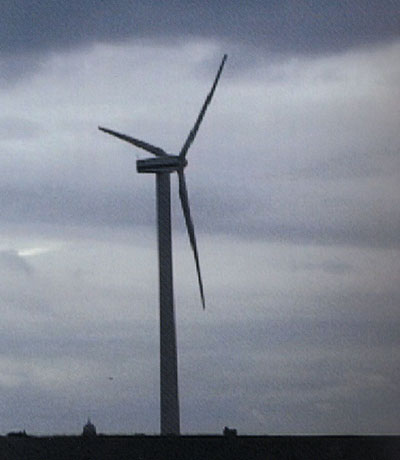 Silvano Repetto - Desert Minelli & Repetto - Acqua Click here for Italian text The Centro d’Arte Contemporanea Ticino opens on Saturday, January 19, 2002 at 5:30 pm the new year exhibition season with a show – with catalogue – mainly dedicated to the video works of Silvano Repetto (1968) and the duo Minelli & Repetto. This public opportunity and the present important, mature moment of the artistic production of Repetto clash. The exhibition is in fact part of a cycle of two shows of him. The first tour has been scheduled at the 5610 Gallery in Tokyo in october ’01. The artist, who features with his partner Gian Paolo Minelli (1968) their common works in two exhibitions both in the Gallery Martin Krebs in Berne and Bernhard Bischoff in Thun, presents in Bellinzona - installed in three rooms of the CACTicino – one big work entitled Desert (2001-2002). It is a video installation putting on stage through some wall projections and a monitor assemblage the relation man-tracks-death-memory. Achieved in Great Britain and in Italy, the work tells about the extinction of the mankind (a theme prefered by Repetto), whose tracks he keeps through technology and - in this particular case – through the video representation. The author imagines, represents and documents a hypothetic and paradoxical disappearance of mankind, as well as the technologies discovered by the man, which – instead – continue to exist even after the man’s death. The enormous screws (reproduced in detail on three large wall projections), giving electric energy for the conservation of the human kind too and the desert seashores with no sort of life give to the observer that feeling of distress given by the sense of emptyness or by the idea of immediate extinction. The dialectic relation work of art-pubblic recreates for the observer a feeling of rebellion, almost genetical, toward death and fall of life and of its values, to get him to stimulate his thinking that human kind is the centre of live instead of technology. The room with the four hands work by Minelli & Repetto entitled Acqua (Water), 1999-2002 is not very different from the rest, but it is conceived as a full part of Desert. The water is the principal element of an installation work made technically by objects, video tapes, photography and the water itself. The thematic development – that links immediately to Repetto’s work – around water and its gradual decrease on earth shows once again the relation between mankind and natural element. If on one side Silvano Repetto puts in evidence the man’s impotence toward the intrusive technique created by the man himself continuously functioning even after his death, on the other hand Minelli & Repetto focus on the human scarce consideration of a natural element (the water), that gives life and keeps it longer. The catalogue issued for this event contains texts by Tobia Bezzola, Kumico Sejima and an introduction by Mario Casanova. Ausstellungsdauer: 20.1. - 17.3.2002 Oeffnungszeiten: Fr-So 14 - 18 Uhr Centro d'Arte Contemporanea Ticino Via Tamaro 3 6500 Bellinzona Telefon 091 825 40 72 Fax 091 825 40 85 E-Mail: cacticino@hotmail.com www.cacticino.net Silvano Repetto - Desert Minelli & Repetto - Acqua Sabato 19 gennaio 2002 alle ore 17:30 s’apre presso il Centro d’Arte Contemporanea Ticino la nuova stagione espositiva con una mostra, accompagnata da catalogo a colori trilingue, dedicata in gran parte all’opera dell’autore video Silvano Repetto (1968) e di Minelli & Repetto. Tale opportunità per il pubblico coincide con un momento apicale e maturo della produzione artistica di Repetto. La mostra si inserisce di fatto in un ciclo di due sue esposizioni, di cui la prima ha avuto luogo presso la 5610 Gallery di Tokyo lo scorso mese di ottobre. L’artista, che è tra l’altro contemporaneamente protagonista con il fotografo Gian Paolo Minelli (1968) di due mostre presso le Gallerie Martin Krebs a Berna e Bernhard Bischoff a Thun, presenta a Bellinzona una grande opera titolata Desert (2001-2002) articolata su tre sale del CACTicino. Si tratta di un’installazione video, che mette in scena attraverso alcune proiezioni a muro e assemblage di monitor il rapporto uomo-traccia-morte-memoria. Realizzata in Gran Bretagna e in Italia, l’opera parla dell’estinzione dell’umanità (tema caro a Repetto), di cui conserva le tracce attraverso la tecnologia e - in questo caso – anche tramite la rappresentazione video. L’autore immagina, ritrae e documenta una ipotetica quanto paradossale sparizione dell’essere umano e le tecnologie da esso scoperte, le quali – invece – continuano ad esistere anche dopo la morte dell’uomo. Le enormi ventole eoliche (qui riprodotte in dettaglio su grande proiezione a muro), che producono energia elettrica per la conservazione dell’umanità, e le spiagge deserte prive di qualsiasi presenza di vita alimentano nello spettatore quel senso di angoscia dato appunto da un sentimento di vuoto o dall’idea di immediata estinzione. Il rapporto dialettico opera-pubblico ricrea però anche nello spettatore quel sentimento di ribellione, quasi genetica, alla morte e all’imminente caduta della vita e dei suoi valori, in modo da stimolare una riflessione che riporti l’umanità al centro senza che la tecnologia alla fine prevarichi e si sostituisca all’umanità stessa. La sala riservata al lavoro a quattro mani Minelli & Repetto dal titolo Acqua (1999-2002) non si discosta dal resto, bensì è concepita come parte integrante di Desert. L’acqua è l’elemento naturale guida di un lavoro installativo risolto tecnicamente con l’esposizione di oggetti, video, fotografia e l’acqua stessa. Lo sviluppo tematico – che si ricollega immediatamente all’opera di Repetto – attorno all’acqua e alla sua graduale diminuzione sul pianeta, ripropone il rapporto umanità-elemento naturale. Se da un canto Silvano Repetto evidenzia l’impotenza dell’uomo di fronte all’invadente tecnicizzazione (da lui medesimo creata) che continuerebbe a funzionare oltre la morte, paradossalmente Minelli & Repetto mettono altresì in luce la poca considerazione da parte dell’uomo di un elemento naturale come l’acqua che dà e mantiene la vita. Il catalogo pubblicato per quest’esposizione contiene testi di Tobia Bezzola, Kumico Sejima con un’introduzione di Mario Casanova. |